#Occitània
Explore tagged Tumblr posts
Text

Mapa del món de la cultura trobadoresca, que va florir a Occitània i la Catalunya pirinenca a començaments de l'Alta Edat Mitjana, donant lloc al naixement de la civilització europea tal com la coneixem ara.
#mapa#cartografia#cartografia històrica#cultura trobadoresca#trobadoresc#trobador#Occitània#Catalunya#història#història medieval#Terres d'òc#Pireneus#Pirineus#història de Catalunya#història d'Occitània
2 notes
·
View notes
Text
Perdonatz-me por parlar la lengua d'òc, s'endevendrà tornar
2 notes
·
View notes
Text
Castèl de Montsegur

El castèl de Montsegur, situat a la vessant occitana dels Pirineus, és una fortalesa emblemàtica vinculada a la història dels càtars i a la croada papal contra els albigesos. Els seus orígens es remunten a abans del segle XII, donada la seva posició estratègica a sobre un cim rocós.
Aquest castell, probablement reconstruït a partir del 1204 per Raimon de Perelha, de la nissaga dels senyors de Mirapeis, es va convertir en un refugi i centre espiritual dels càtars, una comunitat religiosa declarada herètica per l’Església Catòlica per les seves creences dualistes i la seva oposició a l’autoritat papal.
El moment més significatiu de Montsegur es va produir durant la croada contra els albigesos (1209-1229), una campanya militar liderada per la monarquia francesa i la Inquisició per eradicar l’heretgia càtara al Llenguadoc. Després de la derrota càtara a diverses regions occitanes, Montsegur es va consolidar com l’últim bastió càtar.
Entre 1243 i 1244, el castell va ser assetjat per les tropes reials franceses en un setge prolongat que va acabar amb la rendició dels defensors el març de 1244. Uns 200 càtars que es van negar a abjurar de la seva fe van ser cremats a la foguera en un prat als peus de la muntanya, un episodi tràgic que va donar nom al que és conegut com el Camp dels cremats.
Després de la caiguda càtara, el castell va ser reconstruït i adaptat a les necessitats militars del moment, servint com a fortalesa de frontera entre França i els territoris catalans de la Corona d’Aragó. Durant els segles XIII i XIV, la fortificació va tenir un paper important en les tensions frontereres entre els dos regnes, especialment abans del Tractat de Corbeil (1258), que va establir les línies frontereres entre totes dues corones.
Posteriorment, Montsegur va perdre importància militar a mesura que la frontera es consolidava i la tecnologia bèl·lica evolucionava. Durant els segles següents, el castell va caure en desús i es va deteriorar, convertint-se en una ruïna.
En èpoques modernes, Montsegur ha esdevingut un símbol de la resistència espiritual i cultural dels càtars i una destinació turística i històrica. Avui, el castell és un lloc protegit, declarat monument històric a França des del 1862, i segueix fascinant pel seu paper en una de les èpoques més dramàtiques de la història medieval europea.
1 note
·
View note
Text
Reencarnar Simone Weil
L’actriu Miriam Iscla protagonitza una lectura dramatitzada de la filòsofa Simone Weil el pròxim 10 d’octubre en el marc de la Biennal del Pensament Jueva, revolucionària, mística, radical. La filòsofa francesa Simone Weil sempre va ser una personalitat difícil de copsar des de l’ortodòxia. La gran actriu Míriam Iscla ofereix la seva veu a una acurada selecció del pensament d’una dona…

View On WordPress
0 notes
Photo
El castell càtar de Querbús, a la comarca de les Corberes (Corbièras), Occitània.

#art#dibuix#iŀlustració#castell#castell de Querbús#Querbús#fortalesa#medieval#mitgeval#castell càtar#castell occità#càtar#Occitània#Cucunyà#Cucunhan#Corberes#les Corberes#Corbièras#Llenguadoc
40 notes
·
View notes
Text

Inktober day 26: Lilia Vanrouge & Malleus Draconia // Sant Mer i el drac de Banyoles
Sant Mer was a hermit born in Narbona (Occitània, France). He was known to be prefer solitude and since young secluded himself in the forest to pray together with his friend Patrici. Unfortunately for him, rumors started circulating about him being a saint capable of perfoming miracles which in turn make a bunch of pilgrims to start to visit him.
One day messangers from Charlemagne came to ask him to accompany them in their expedition to reconquer the lands from the Muslims. Although he tried to refuse, in the end he had to relent and join the campaign with his friend Patrici.
The campaign started in Gaul (France) then continued through el Roselló (North Catalonia, France), followed by l'Empordà (Catalunya) and ended at Girona (Gironès).
While resting in Girona, Mer retired to a quiet place to pray but was interrupted by a distraught woman asking him to save her son from the claws of the monster in the pond in Banyoles (Pla de l'Estany).
Mer politely referred her to Charlemagne's troops. But she told him that numerous knights and soldiers had already tried and failed, or just fled right away upon seeing the monster. Mer politely referred her to Charlemagne himself. She told him that Charlemagne himself also fled after seeing the dragon roasting his soldiers to ashes.
The woman then explained that since that encouter the dragon was dissatisfied with just eating cattle or lost travelers and had started eating kids. Therefore the authorities in Banyoles started leaving a kid each night near the pond for the dragon to eat, and that night was her son's turn.
Hearing the pain in the woman's voice, Mer relented and went to Banyoles. Once there he went where the monster was nesting, armed just with his book of prayers.
When he arrived the dragon immediately got out of its nest, fire drooling out of his mouth. Mer started praying and as time passed the dragon became more and more docile. Then Mer took off his stole and put it around the beast's neck, and while resuming his praying he started to head to the center of the town.
When he arrived, placid dragon in tow, the soldiers who were waiting attacked and quickly cut off the dragon's head. The townspeople overjoyed at being freed of the beast celebrated and started recolecting money to built Mer a monastery (Monestir de Sant Esteve), and Charlemagne declared him abbot, agaisnt Mer's wishes of solitude.
Mer as soon as he had a big enough congregation, fled to become a hermit once again.
#twisted wonderland#twst#lilia vanrouge#malleus draconia#inktober#inktober 2024#my art#poor guy just wanted to be left alone with his friend#a tot això oh quin puto gust el 0-4 del Barça#llàstima dels dos mistos del Lewandowsky#haguès estat hilarant un hat trick seu a cal Madrid#i ja no diguem un 0-6 si encara els hi cou el 2-6#però collons sinó s'ha disfrutat
64 notes
·
View notes
Text
I si algú es pensava que el PSC no podia ser més ranci, es reiteren el donar suport al feixista que han col·locat de delegat de la Generalitat de Catalunya a la Catalunya Nord (Daniel Christipher Person).
Després de ser el primer delegat que ha fet canviar la llengua de comunicació de la Generalitat a la Catalunya Nord (fins ara es feia en català, ara únicament en francès), aquest home ha anat a la Catalunya Nord ha dir-los que no són catalans i que a aquella terra no li dirà mai Catalunya Nord, únicament els termes que segons ell són oficials reconeguts per l'estat francès, és a dir, Pirineus Orientals per referir-se a la Catalunya Nord + la Fenolleda (una denominació imposada durant el centralisme jacobí, que va reorganitzar totes les zones de l'estat per amagar-ne i diluïr-ne les cultures, imposant-hi l'imperialisme francès), o Occitània per referir-se a tota la regió administrativa. Un tema que els nord-catalans ja van lluitar molt, intentant que la nova regió administrativa no s'anomenés només Occitània sinó Occitània-País Català, però al ser una zona petita i menys poblada dins d'una regió gran no ho van aconseguir.
Però, a sobre, Person menteix. El 10 de desembre de 2007 es va aprovar la llei francesa per la qual es reconeix que el terme "Catalunya Nord" és equivalent a "Pirineus Orientals". Simplement es nega a anomenar el país pel seu nom per pur supremacisme i catalanofòbia. A sobre, ha vingut a fer aquest discurs de merda en un moment especialment dur per als nord-catalans, quan els governs d'extrema dreta estan atacant-ne constantment la catalanitat (Aliot esborrant el nom "la catalana" de Perpinyà i canviant-ne l'escut, retirant els ajuts econòmics a La Bressola, etc) i quan l'estat francès ha portat a alcaldes i regidors de varis ajuntaments nord-catalans als tribunals simplement per parlar en català i no en francès.
Òbviament, entitats i persones reconegudes de la Catalunya Nord han escrit a Salvador Illa perquè destitueixi el delegat de la Generalitat. Per cert, podeu unir-vos a la petició amb aquesta recollida de firmes:
I la resposta d'Illa és dir que no vol "entrar en debats nominalistes" i s'ha negat a anomenar-la Catalunya Nord, dient-li simplement "aquest territori" (ja a la visita oficial li va dir únicament "la demarcació del sud de França amb vincles històrics amb Catalunya"). És nominalista anomenar a un país pel seu nom, un nom que li ha sigut negat per una potència colonial que l'ha ocupat i l'ha intentat aniquil·lar? I, en canvi, deixar d'utilitzar la llengua local per passar a utilitzar únicament la llengua d'imposició (el francès) i eliminar el nom de la terra per imposar-hi la denominació triada des de París sense consultar a la població i en contra de la seva voluntat, això els sembla neutre? El nacionalisme francès —i el supremacisme francès— deixen de ser nacionalisme simplement perquè són l'status quo? Però nosaltres demanant tenir el mateix dret a existir sí que és nacionalisme i distraiem amb qüestions nominalistes?
Catalunya Nord és igual de Catalunya que la Catalunya Sud. És insultant que ho neguin. Per la gent de Catalunya Nord, dir "Catalunya" vol dir justament Catalunya Nord.
Res que no ens haguem d'esperar del PSC, que porta tota la legislatura així, atac rere atac contra la llengua catalana i la catalanitat a la Catalunya que governen. No ho explico aquí perquè és constant i perquè no cal, ja surt als diaris i no tracta d'això aquest blog. Però anar a atacar d'aquesta manera el Nord, sabent que ho estan passant malament, no és només de ser supremacista i catalanòfob, sinó també cruel.
28 notes
·
View notes
Text
Got tagged by @yharnamesque lessgo
WRITING GAME
Post the last line you wrote and tag someone for every word in the line:
"Tumbler elves have ancestral burial grounds as well, underground mounds with many chambers to house the the deceased, with one central central where the ceremonies are held."
A bit of worldbuiding, and also YES I named one of my elven cultures "Tumbler elves". Believe me, I gave worse names than that
-
TAG GAME: GET TO KNOW MEME
LAST SONG: Brezhoneg.com - Gwennyn
youtube
LAST MOVIE: uuuuh I don't really watch movies very often. I'm pretty sure it was WolfWalkers, I rewatched it last June with a friend
LAST BOOK: The Priory of the Orange Tree! I've finally read it last month, I've had the book on my to-read pile since february 2020! A great book, although I've found some of the stylistic writing choices a bit baffling (but honestly that may very well be an issue with the French translation, I'd need to read the original English to compare)
LAST TV SHOW: The Dragon Prince (I actually just finished the last episode this morning)
SWEET, SAVOURY OR SPICY? I like all three, but I tend to crave savoury more
RELATIONSHIP STATUS: 😎

LAST THING I GOOGLED: Langogne. A small town in Occitània (original Occitan name is Lengònha) I used to visit often as a kid. i wanted to see where exactly it was on the map, since I haven't been there in at least 10 years
LOOKING FORWARD TO: uuuh I don't know. Reading my friends' stories? Playing Okami 2? something a bit closer - oh wait I know! For my bakery to re-open! They're on a 20-days holiday break & there's still a week before they re-open and I really crave their pain au chocolat with almonds and their baguette viennoise au chocolat and generally good bread & pastry. Plus if there's no one behind me sometimes I get some local gossip from the baker xD I also have a bunch of video games I'm looking forward to play, now that I have a proper gaming computer. uh. I have many things to look forward to actually
CURRENT OBSESSION:
Learning about the history of the Occitan language & literature, and how it's being taught & passed on to new generations since the beginning of the last century, especially in the greater scope of cultural dynamics in France, and in comparison to the history & teaching & passing of Breton in Brittany (it's fascinating, two languages & cultures oppressed by the same state and yet the language revival dynamics have significant differences)
No pressure to participate, guys: @inayaeza @gilglirthemaia @slumpedgremlin @dandy-daisylion @percevall @jackdaw-kraai
and anyone who wants to do it actually, feel free to do it
3 notes
·
View notes
Text
ALERT
If power did get back on in time for Minus I to be welcomed somewhat officially at Louise-Michel high school, the head of the receiving committee happened to be left-wing (France Unbowed) Sébastien Rome MP who gifted him a book on 'the Camisards, famous for their resistance to monarchy'.
Long story short, our presidemperor Macron I the Detestable made a speech live on broadcast television and a vast number of French cities hosted a frying pan & casserole concert outside of town halls which would last for the entire duration of said televised allocution.
In case anyone was wondering, the Presidumb spoke of 'appeasement' and of moving on from this difficult period, so even more people took to the streets to burn things—we're on Day Three now and I don't believe anyone is feeling particularly appeased.
In an unfortunate move, some communication genius suggested that Macron made a big announcement of 'a hundred days' to 'rebuild the country together' (or somesuch silly platitude) and conclude this whole affair with the pension system; apparently, a bunch of French citizens still happen to know their Revolutionary history a bit, since some have made peculiarly snide comments about the last time one of our monarchs did a Hundred Days thing.
I mean, if he's giving us instructions now...
#emmanuel macron#sébastien rome#viva occitània !#camisards#french politics#french history#réforme des retraites#riots in france#french protests#ganges
37 notes
·
View notes
Link
Fred Oarao - L'éternel Printemps - Murat Sur Vèbre Occitània - 2023 - 1
0 notes
Text

Viurem lliures o morirem.
#Viurem lliures o morirem#Catalunya#catalans#nació catalana#llibertat#Occitània#nació occitana#occitànic#catalànic#Diada Nacional de Catalunya#vernaclisme#vernacle
3 notes
·
View notes
Text
EM-Finale in Flensburg - ich war dabei! Spinnt sie jetzt? Nein. Ich spreche von der Fußball-Europameisterschaft der autochthonen nationalen Minderheiten, der Europeada. Im Finale der Herren standen Friûl / Friaul und Occitània / Okzitanien, es ging 2:0 aus und ich war aus Hamburg angereist, um das Spiel zu sehen. Im Folgenden ein paar Impressionen mit Bildern.

Für wen bin ich? Mein Ohrschmuck verrät es...



Was fürs Auge: Das Publikum bestand hauptsächlich aus den Mitgliedern der bereits ausgeschiedenen Teams, die mit ihren Trikots zeigten, woher sie kommen. Vor dem Spiel unterhielten Kärntner Slowen*innen (Team Koroška) alle Menschen im Eingangsbereich mit ihren Gesängen, während des Spiels sorgte vor allem die Serbske Mustwo aus der Lausitz für Stimmung.

Fans der spielenden Teams waren kaum zu sehen. Allerdings wäre eine Anreise aus Frankreich oder Italien schwierig zu organisieren gewesen, da keine 24 Stunden vorher feststand, wer ins Finale einziehen würde. Immerhin wurde die okzitanische Flagge vom ladinischen Block adoptiert. Es war schön, wieder einmal die okzitanische Hymne mitsingen zu können. Das Gekloppe unter den Spielern etwa zehn Minuten vor dem Abpfiff hätte nicht sein müssen - zur Siegerehrung sollen sie sich wieder vertragen haben, ich musste meinen Bus erwischen, um meinen Zug zu erwischen, und konnte daher nicht länger bleiben.
0 notes
Text
FUCK YEAH GRAVITY FALLS IS IN OCCITÀNIA

The image used in the background of the Gravity Falls logo HAS BEEN FOUND!!
It's located in France!!
I made a thread on Twitter explaining the full story and how I even asked Ian Worrel and Alex Hirsch about it, but lemme run down quickly how it was found and where it is!
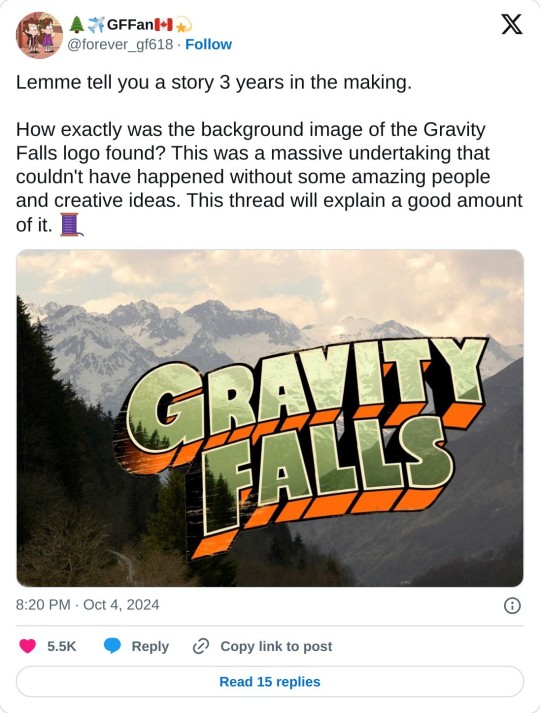
After 3 years of searching with some friends on and off, we had no real luck. I've been working on a video about it for a while but decided to try one more time. My friend @trickengf suggested looking at international logos as they may have more of the image available and sure enough...we found logos like the Japanese and Russian GF logo had more visible detail of the image.
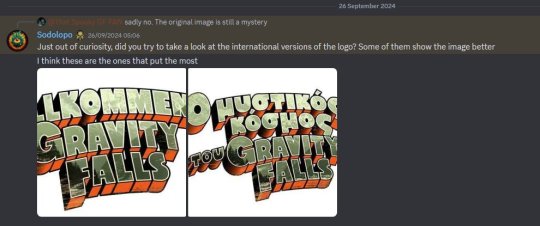
From that, Tricken made a remake of the image and used it to find it. He ended up finding the source at about 3AM for me, lol!
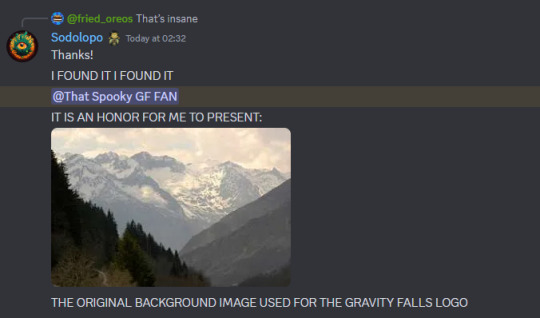
My friend Fried Oreos then confirmed the image was old enough to fit the criteria of pre GF pilot, by determining the image was on the Textures website it was sourced from since 2008!

Then, my friend Alex M managed to buy the HD image and we were able to analyze its metadata for more info!

Turns out, the image, called "LandscapeMountains0009," was taken by a Nikon D70 camera on April 18, 2007!
THE GRAVITY FALLS LOGO IMAGE IS ALMOST 18 YEARS OLD!!
From there, we began looking for the location. The meta data had no location, but other images taken around the same time showed signs of maybe the location being in Europe.
After over a day of searching, Tricken, Alex M and Oreos FOUND IT!!

The location of the image is a mountain range near the town of Sers, France...near the border with Spain.
Exact coordinates of the closest viewable angle of the image is 42°54'23.2"N 0°06'05.6"E
This is a major discovery and one I cannot believe we did. While this search was started by me in 2021 with some friends, it was TrickenGF, Alex M and Fried Oreos who deserve all the credit for this discovery! They were the geniuses who tracked all of this down and were able to connect the dots to get to this point.
You guys are amazing and I am beyond grateful for all of this.
Finding this image means that fans can now recreate the Gravity Falls logo as they want with anything they want. For example, Tricken made this for me using the image :D
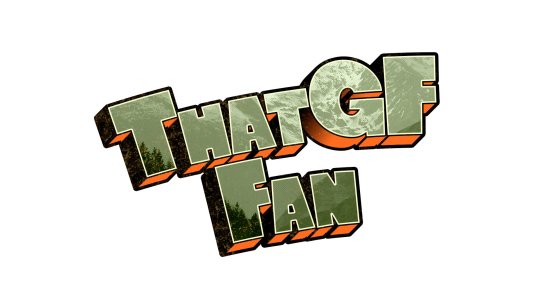
Or, you can do this, lol

We now have it!
For 12 years as we looked at the Gravity Falls logo...we were in reality looking at a mountain in France...NOT Oregon!
So, I guess this is a major W for France but sorry, Pacific Northwest, Gravity Falls is actually French, lol!
I still can't believe we found this. I'm so happy :P
7K notes
·
View notes
Text
Glorifican la lenga francesa a Villers-Cotterêts
Emmanuel Macron inaugurèt ièr de ser aquel ambiciós projècte de 211 milions d’èuros dins lo meteis castèl ont se signèt l’ordenança francista Emmanuel Macron a inaugurada la Ciutat Internacionala de la Lenga Francesa a Villers-Cotterêts, un projècte de 211 milions d’euros, equivalent al còst del Centre Jòrdi Pompidor de París o al musèu del Cai Branly. Lo sit aculhís una exposicion permanenta,…
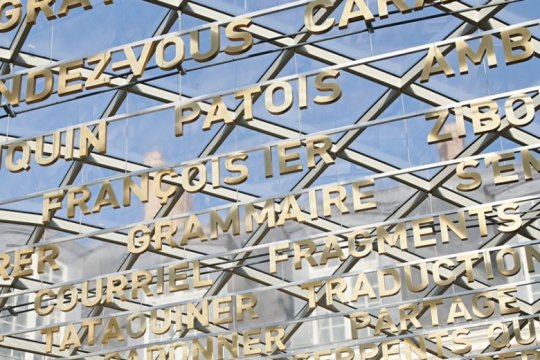
View On WordPress
#Diversité#Ensino#Eventos#Français#Interpretação#Llengües minoritzades#Museus#Normas e leis#Occitan#Occitània
0 notes
Text
CE QUE LES INDIENS ONT APPORTÉ À LA DÉMOCRATIE
ARTICLE Ce que la Démocratie doit aux Indiens d’Amérique: beaucoup plus qu’on ne le croit ! écrit par Elrik Fabienne -Maigné. 19 mai 2023 CULTURE 31 La campagne « CE QUE LA DEMOCRATIE DOIT AUX INDIENS D’AMERIQUE », initiée par l’association montalbanaise Oklahoma-Occitània, a commencé le 10 mai dernier par une conférence de presse qui en était le lancement public. Et elle a déjà reçu de très…

View On WordPress
0 notes
Note
Ola dende Galicia. Pregunto: ¿Tes ou sabes dalgún blog similar que estea en catalán? Estiven a ver nos FAQs, pero non atopo nada. Os teus posts parécenme moi interesantes, pero fáiseme moi raro ler sobre Catalunya en inglés. Grazas e parabéns polo traballo. // Hi from Galicia. Do you have or know any similar blogs in Catalan? Your posts are really interesting, but it is weird to me to read about Catalunya in English. Thank you and congrats for your work.
Moltes gràcies! ☺️
A Tumblr no conec cap blog així, a altres xarxes socials, més o menys. Aquest blog l'escric per a persones estrangeres, per això intento explicar les coses sempre des de zero. Crec que moltes coses que explico aquí no caldria explicar-les si fes el blog en català, perquè els catalanoparlants ja ho saben. Per aquest motiu, sí que hi ha comptes que parlen sobre cultura catalana dirigits a catalans però acostumen a estar molt més acotats que no pas aquest.
Per exemple:
Festes.org (pàgina web): una pàgina web molt completa sobre festes, fires i altres celebracions de cultura popular arreu dels Països Catalans.
Històries de Barcelona (Bluesky)
Efemèrides d'arquitectura (Bluesky)
Laia Baldevey (Bluesky, Instagram): penja il·lustracions de llegendes.
Tasta'l d'ací (blog, Instagram): pengen sobre cuina tradicional valenciana.
El curiosaire (Instagram, TikTok): penja vídeos sobre expressions i frases fetes valencianes.
Cabrafotuda (Instagram, TikTok): principalment és un compte d'humor, però també penja sobre llengua i va pels pobles valencians ensenyant algunes tradicions.
Unitat de llegenda (Instagram): penja llegendes de Catalunya.
Medievalismes (Instagram, TikTok): penja sobre llocs medievals i neomedievals de Catalunya i Occitània.
Alfons Pérez Daràs (Instagram, TikTok): explica llegendes valencianes. També fa el pòdcast Baix la lluna.
Romànic Català (Instagram, TikTok i Bluesky): sobre l'art romànic.
Patrimoni Cultural - Generalitat de Catalunya (Instagram, YouTube, Facebook, X): pàgina del departament de cultura de la Generalitat de Catalunya.
Patrimoni Cultural d'Andorra (Instagram): pàgina del Ministeri de Cultura del govern andorrà.
Ofici Lingüístic de l'Alguer (Instagram): entre altres coses, de vegades també pengen sobre tradicions alguereses, història d'alguns llocs de la ciutat i paraules alguereses.
Pol Casellas (Instagram): curiositats i història de l'urbanisme de Barcelona.
Marta Lloret, caçadora de masies (Instagram, X): penja sobre les masies de Catalunya.
Georgina Mollà (Instagram): llauradora que explica les feines del camp valencià.
Fornet de la Soca (Instagram): pàgina d'un forn mallorquí, pengen vídeos de pastes i receptes tradicionals i històriques de Mallorca.
Melicotó (Instagram): una botiga de productes basats en la cultura popular balear molt bonica. A més dels seus productes, de vegades també pengen publicacions explicant festes i tradicions.
Tradictions (Instagram, TikTok): curiositats i història de Barcelona.
Llegendàrium (pàgina web): pàgina web molt completa sobre llegendes catalanes. Algunes entrades són de pagament.
Cultura Popular Barcelona (web, Instagram)
Cases Singulars (Instagram): associació de cases d'arquitectura modernista a Barcelona.
Laura Poulain (Instagram, YouTube): cantant que penja sobretot covers de cançons famoses a Catalunya, moltes són openings d'animes que es feien a la televisió catalana als anys 90s i 2000s però també hi ha algunes cançons tradicionals/infantils.
A part d'això, els comptes de museus i associacions culturals. La revista d'història Sàpiens també és molt interessant, parlen de tot el món però també de coses d'aquí. També hi ha moltes coses a la web de la revista Descobrir Catalunya.
Depèn de què estiguis buscant exactament! Espero que això et serveixi, i moltes gràcies de nou 🥰
24 notes
·
View notes